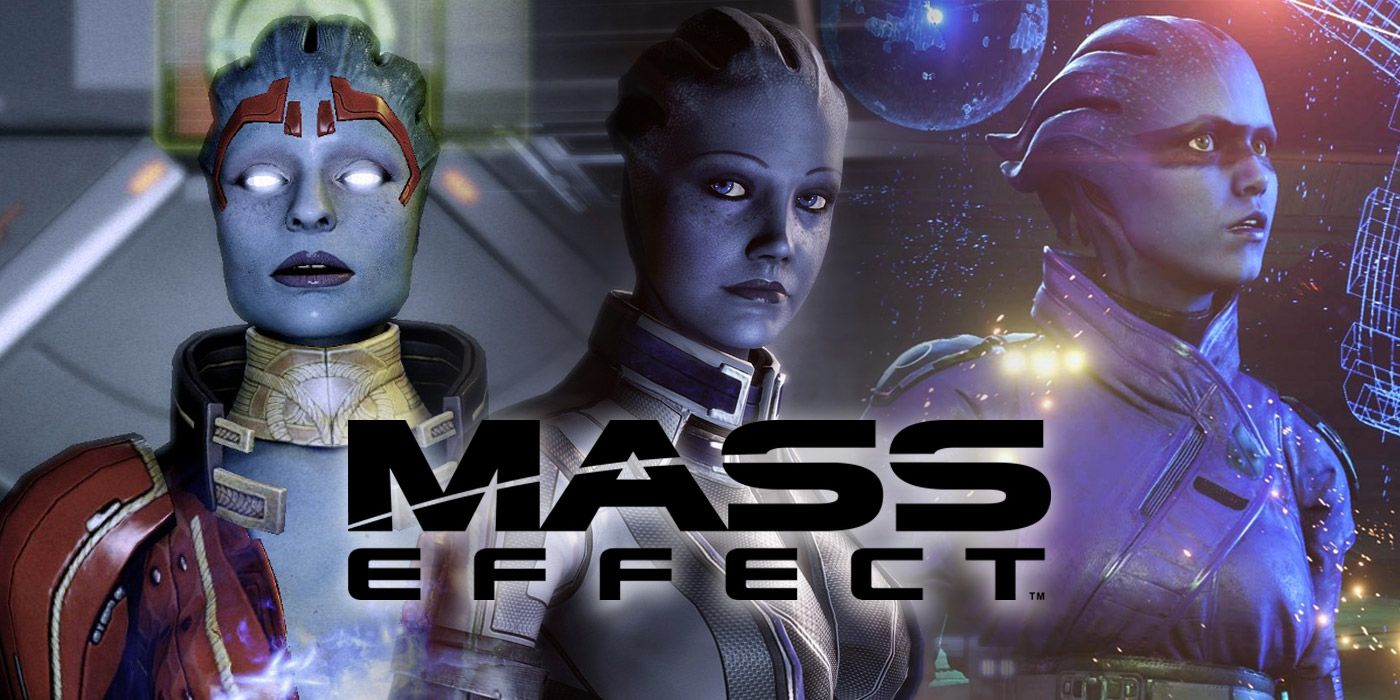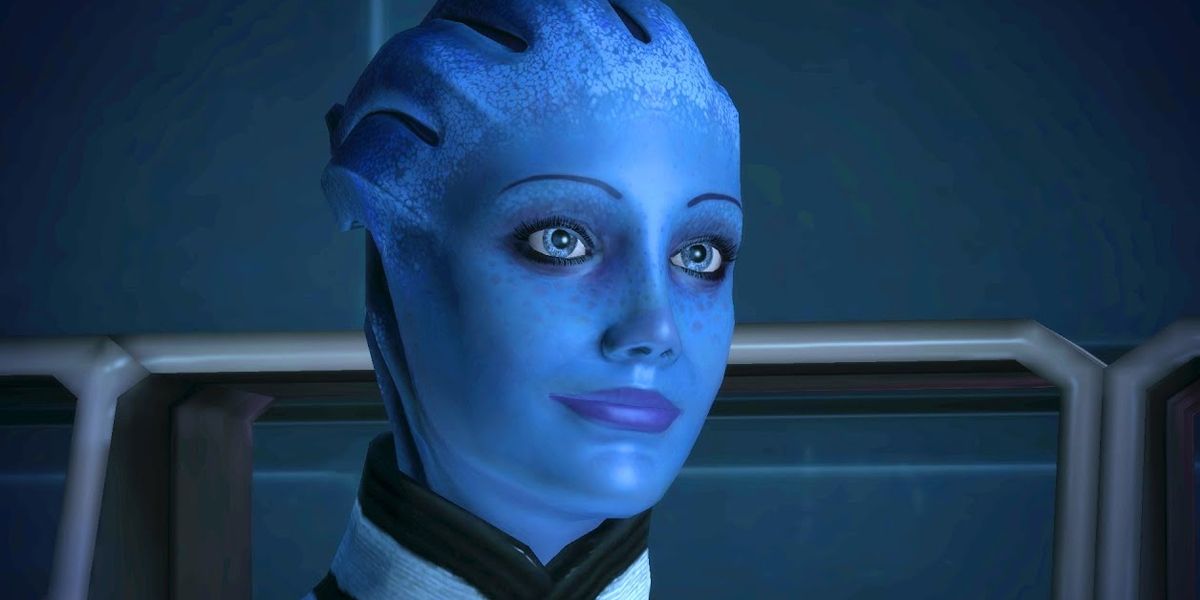In the Mass Effect series, the Asari are probably the most well-known and memorable of all the alien races, found in both the original Mass Effect Trilogy and its successor, Mass Effect: Andromeda. The Asari have a rich history that’s fascinating to learn about, but the biotic abilities they bring to in-game combat are also worth mentioning.
Thessia was the native, original home to the Asari race. The planet also contained a lot of element zero, which led to most Asari developing biotic abilities. Well, that was what the Asari told people about their biotic abilities, anyway. Fans of the Mass Effect series who have completed all three games would know that this was a bit of a stretch, and the Asari had some help developing their biotics. However, players don’t find this out until the events of Mass Effect 3.
Biology of Mass Effect’s Asari
The Asari have an incredibly long lifespan, having been known to live to be over 1000 years old. As for their appearance, the Asari look fairly similar to biologically female humans. However, they’re technically a mono-gender race, meaning they can mate and reproduce with a partner of any species or gender. Being mono-gender, they also have no gender roles or concepts of gendered differences. Their language doesn’t always reflect that, though, as the Asari are commonly referred to as an “all-female” race.
In fact, femininity seems to be steeped into their culture, even if the Asari are mono-gender. Many Asari go by “she/her” pronouns, though there are some who prefer more masculine pronouns. When it comes to offspring, they are “daughters,” and their life cycle consists of three different, feminine, life stages: Maiden, Matron, and Matriarch. Though each stage has a relative age it starts at, sometimes Asari can begin the next stage of life when they feel they’ve matured enough to move on.
Besides their feminine appearance, Asari most notably have blue/purple skin. In some cases, albeit rarely, they can have a teal hue to their complexion. Not all Asari have facial markings, but some, like Liara T’Soni or her mother Matriarch Benezia, do. Though Asari are extremely similar to humans in stature and bone structure, they do not have hair. Instead, they have scalp-crests that are made of cartilage and semi-flexible. Also, their blood is purple.
Perhaps most fascinating about the Asari is their mating practices. When mating with whoever they choose, the Asari sends two copies of their genes to the offspring—one of which is untouched, and the other is a hand-selected amalgamation where the Asari rifled through their partner’s DNA to choose the most desirable traits that their offspring would benefit from. This process is done by “melding,” where the mating Asari, like Liara or Peebee as romance options, meld and become one with their partner via the nervous system, sharing every single part of each other.
The product of these mating rituals always results in an Asari, which makes sense because none of the partner’s DNA is ever truly passed on. However, this becomes an issue when two “pureblood” Asari mate—that is, Asari whose parents have only ever been Asari. These combinations can lead to Ardat-Yakshi, which players would remember from Mass Effect 2 with Samara’s daughter Morinth. In fact, players could even try to meld with Morinth if they brought her on the Normandy—but they would ultimately die because Ardat-Yakshi overloads their partner’s nervous systems and kill them.
Asari Society in Mass Effect
The Asari have a long history within Mass Effect lore, having been one of the first alien races to not only utilize interstellar flight, but settle on the Citadel as well. They are one of the most respected and influential alien races in the galaxy, but they didn’t get there on their own. It’s not common knowledge throughout the galaxy, but the Protheans actually helped advance early Asari development. Their interference made the Asari much more genetically and technologically advanced than they would have been otherwise. This is also why the Prothean beacon was hidden on Thessia in the Temple of Athame.
Unfortunately, the Asari religion that worshipped the goddess Athame was manufactured by the Protheans as well. The beacon hidden in the temple became a well-guarded secret because it’s almost universally regarded that the Asari became as advanced as they are based on their own merit, not interference from any other beings. The reveal of the beacon would have shattered that illusion, which is why the Asari only revealed it to Commander Shepard as a last-ditch resort to try and stop the Reapers during Mass Effect 3.
Besides their biotic advancements, the Asari have a unique culture, government, and economy. Because they live for so long, they tend to play a “long game” not often found in other alien races. They can set a plan in motion and wait years to see it come to fruition, but that’s because they have the time to do so. This also leads to them being more cognizant of spending the time they have with their loved ones, especially their partners who often have a shorter lifespan.
Some Asari become Justicars—part of an ancient Asari order that abandons most personal possessions and adheres to a strict code that corrects injustices. Players will remember Samara from the Mass Effect Trilogy, who was a member of this order. Beyond their social ties, the Asari helped found the Citadel Council and have a government that operates with no politicians or elections. Asari citizens can participate in policy debates at any time, although most consideration is given to the opinions of Matriarchs based on their age and wisdom.
The Asari also have the largest economy in the galaxy thanks to their diplomatic nature and preference for diplomacy over violence. However, just because they don’t prefer violence doesn’t mean they’re unprepared for it. The Asari have one of the strongest navies in the galaxy and Asari Huntresses, or Commandos, like romance option Cora Harper in Mass Effect: Andromeda, excel at special operation missions that focus on stealth.
The Asari have been featured in both the original Mass Effect Trilogy and Mass Effect: Andromeda, with many fans citing Asari as their favorite, or least favorite, companions depending on their personalities. Regardless, it’s undeniable that the Asari are a force to be reckoned with in the Mass Effect universe.
The Mass Effect Trilogy is available now for PC, PlayStation 3, and Xbox 360.



